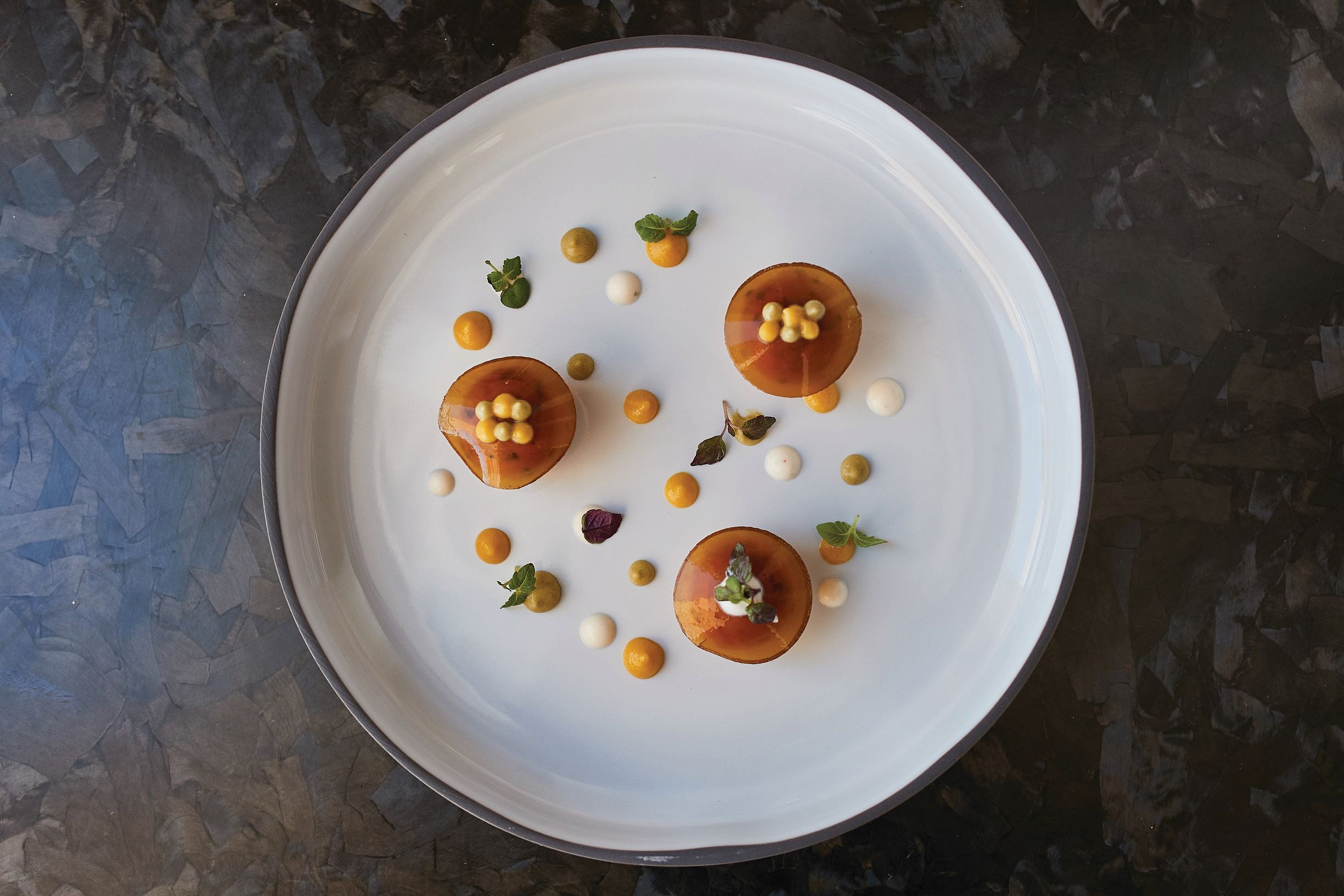Indulge in The Tastiest Highlights Of The St. Barth Gourmet Festival
Michelin-starred chefs served up fine food and drink at the decadent annual gourmet fest.
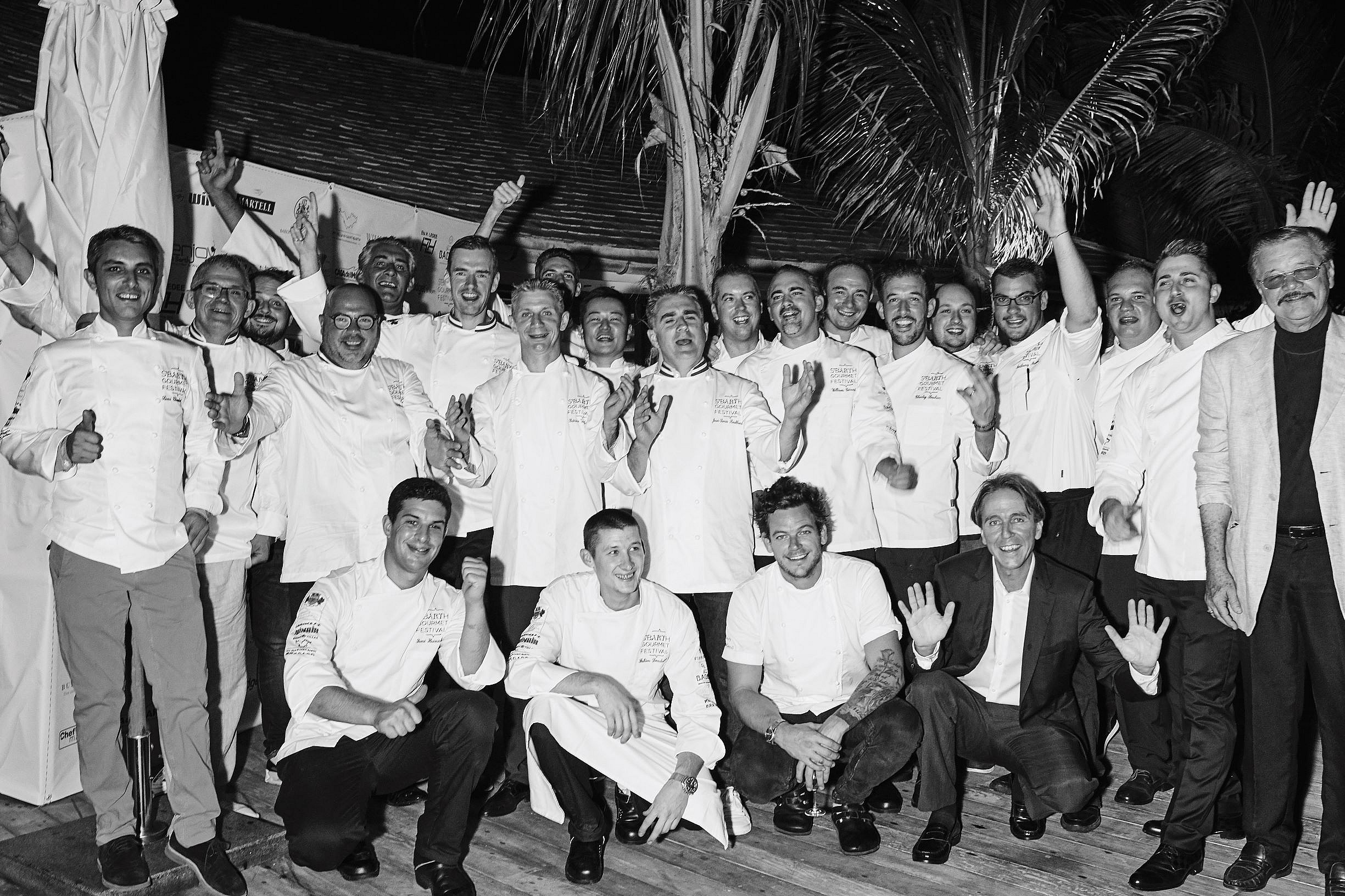
In 2017 the storied island of Saint Barthélemy—or as it’s casually tossed around amongst the G650 set, St. Barths—was besieged by Hurricane Irma, nearly razing one of the Caribbean’s most opulent jewels. But less than three years after one of the worst disasters in its history, the French outpost’s profile has somehow, almost incomprehensibly, rebounded and is looking better than ever. We flew to St. Barths to experience one of the island’s annual flashpoints—the prestigious St. Barth Gourmet Festival—to not only enjoy a bounty of Michelin-starred chefs and world-class cuisine, but to verify that St. Barths’s legendary caviar- and Moët-soaked dens of opulence have indeed returned to their former glory.
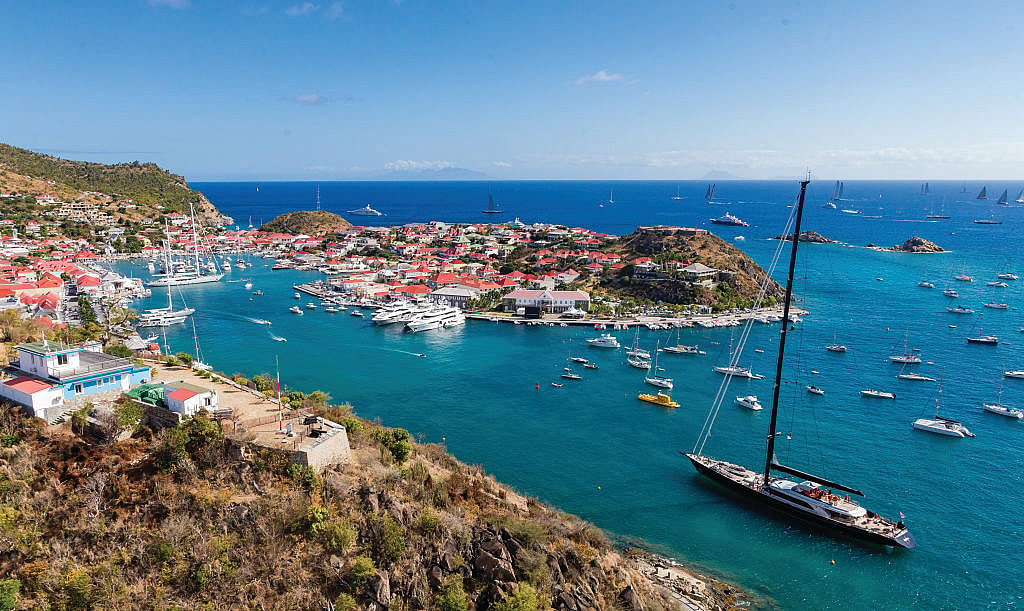
As the volcanic isle first materializes out of the plane’s window, what strikes you first is its ripeness. On sunny days, of which Saint Barthélemy is said to boast more than 300 every year, the island looks like an emerald floating on a shimmering turquoise pool, its famous beaches bright white slashes dividing the green from the impossibly blue.
That moment of dreamy wistfulness quickly evaporates as the eight-seater Pilatus PC-12 descends, and suddenly it looks like the Tradewind Aviation turboprop is on a collision course with a mountain. All dazzlement shatters, and suddenly you realize why this Caribbean island regularly makes the World’s Most Terrifying Airports lists. Due to wind shear and a comically short runway (just over 2,100 feet, too short for anything larger than a 19-seater), the descent towards St. Barths is a white-knuckle initiation into a secret, lavish cult: survive the jump-in, and prepare to enjoy the silken luxuries of a rarefied society.
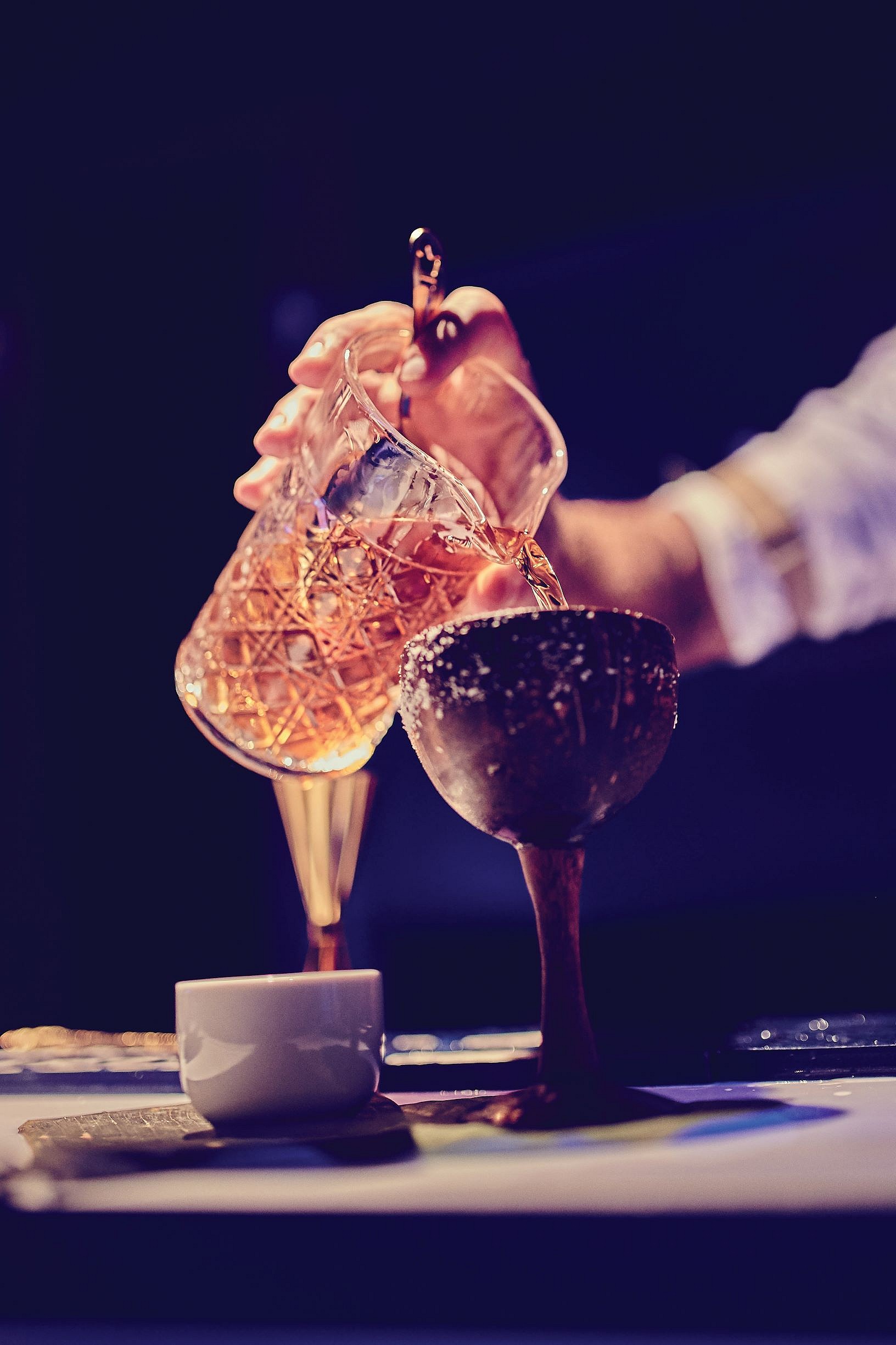
There are hundreds of islands in the West Indies, but none quite like St. Barths. Even Columbus recognized its singularity when he first laid eyes upon it in 1493, naming it after his beloved brother Bartolomeo. Squint at its Rolex-filled and Hermès boutique-lined streets, or on its sugar sand beaches with a rosé in hand, and the vibe is more St. Tropez than St. John.
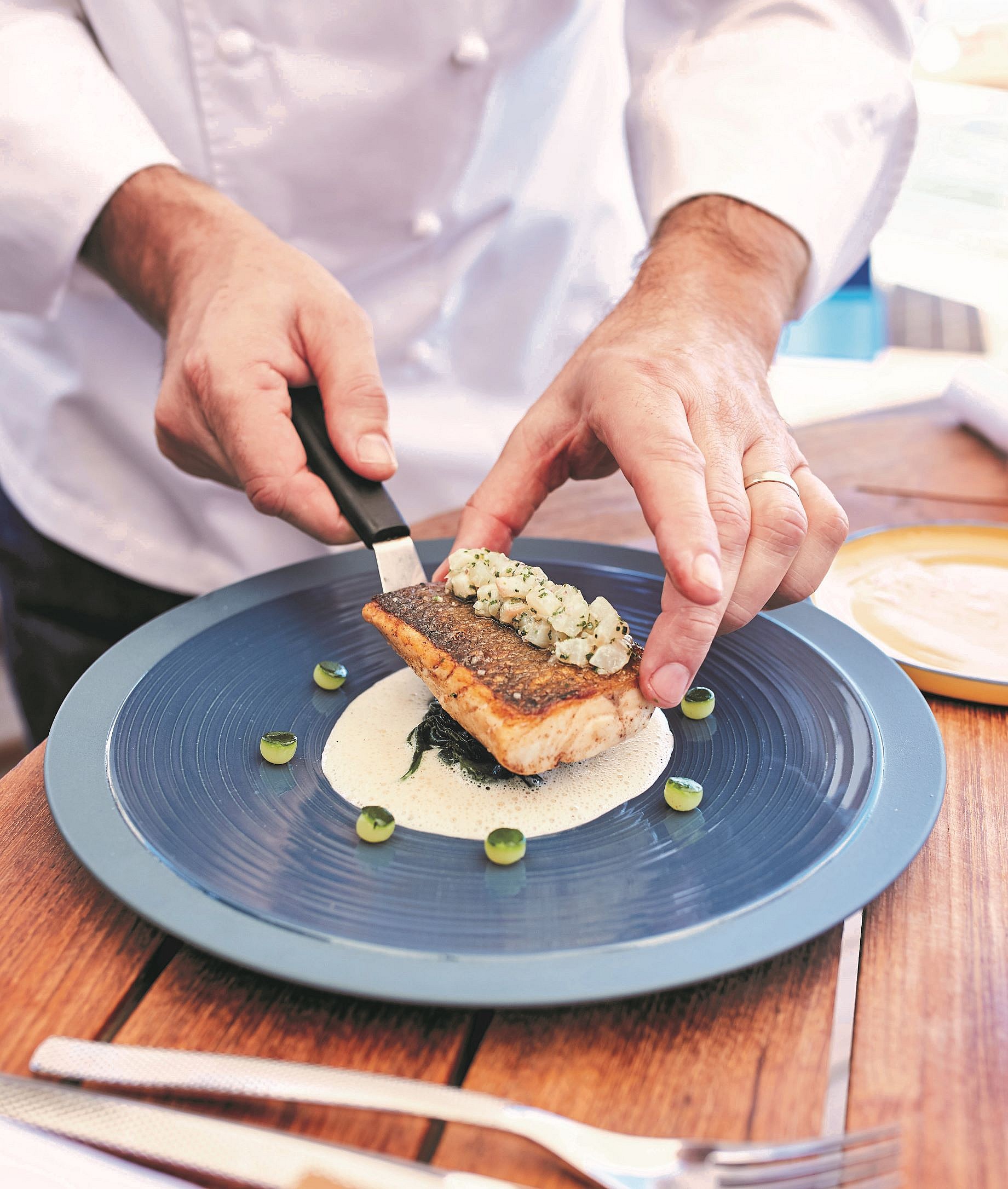
Unlike many a nearby island still pulling itself out from the wreckage of Irma, you’d be hard-pressed to find any clue that the Category 5 storm wreaked just under $1 billion of damage on this French overseas collectivity. Annual events like the West Indies Regatta and St. Barth Film Festival are already back in full force, but we came here to experience the island’s epicurean Super Bowl—the culinary goldmine known as the St. Barth Gourmet Festival.
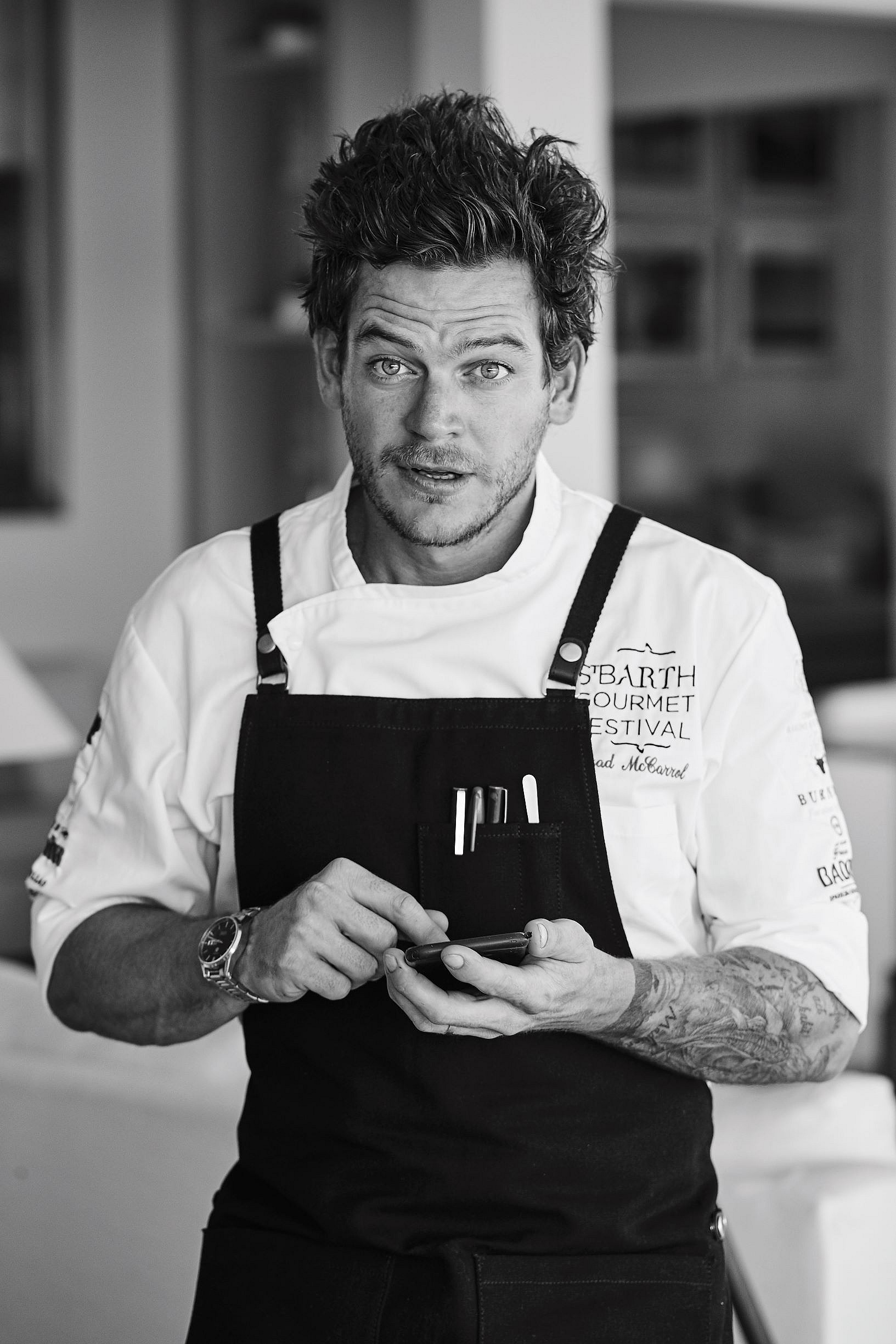
Having celebrated its seventh year, the Gourmet Festival invites celebrated French chefs to cook alongside teams of local maestros to not only attract worldwide talent to St. Barths’s ritzy shores, but to highlight the local talent already manning the kitchens of its world-class hotels and restaurants.
Take Chef Jarad McCarroll who runs his restaurant Jarad at the five-star Hotel Le Toiny. McCarroll teamed up with Patrice Vander, acclaimed executive chef at the Hôtel Royal and its Michelin-starred Les Fresques. At McCarroll’s openair kitchen they split duties on a four- or eight-course prix fixe menu.
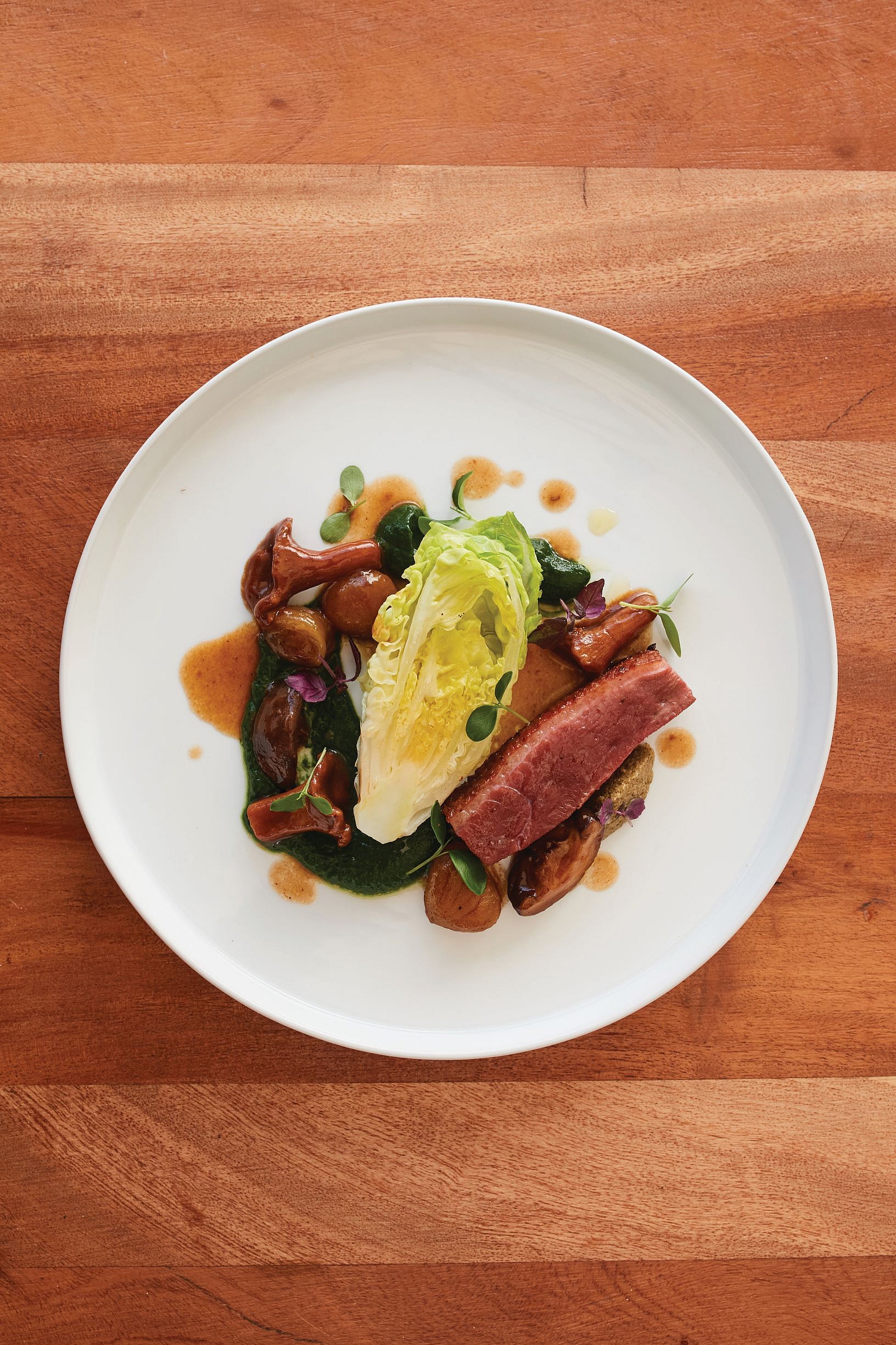
Both prepared impeccable delicacies for their sold-out seatings, but it was McCarroll’s ingenious “Our Island”—a dish consisting of different layers and textures of onions built into a mold of St. Barths— that won’t soon be forgotten. Starting with a powerful vegetable stock, Chef McCarroll slowly infused it with roasted onions over a period of more than 10 hours.
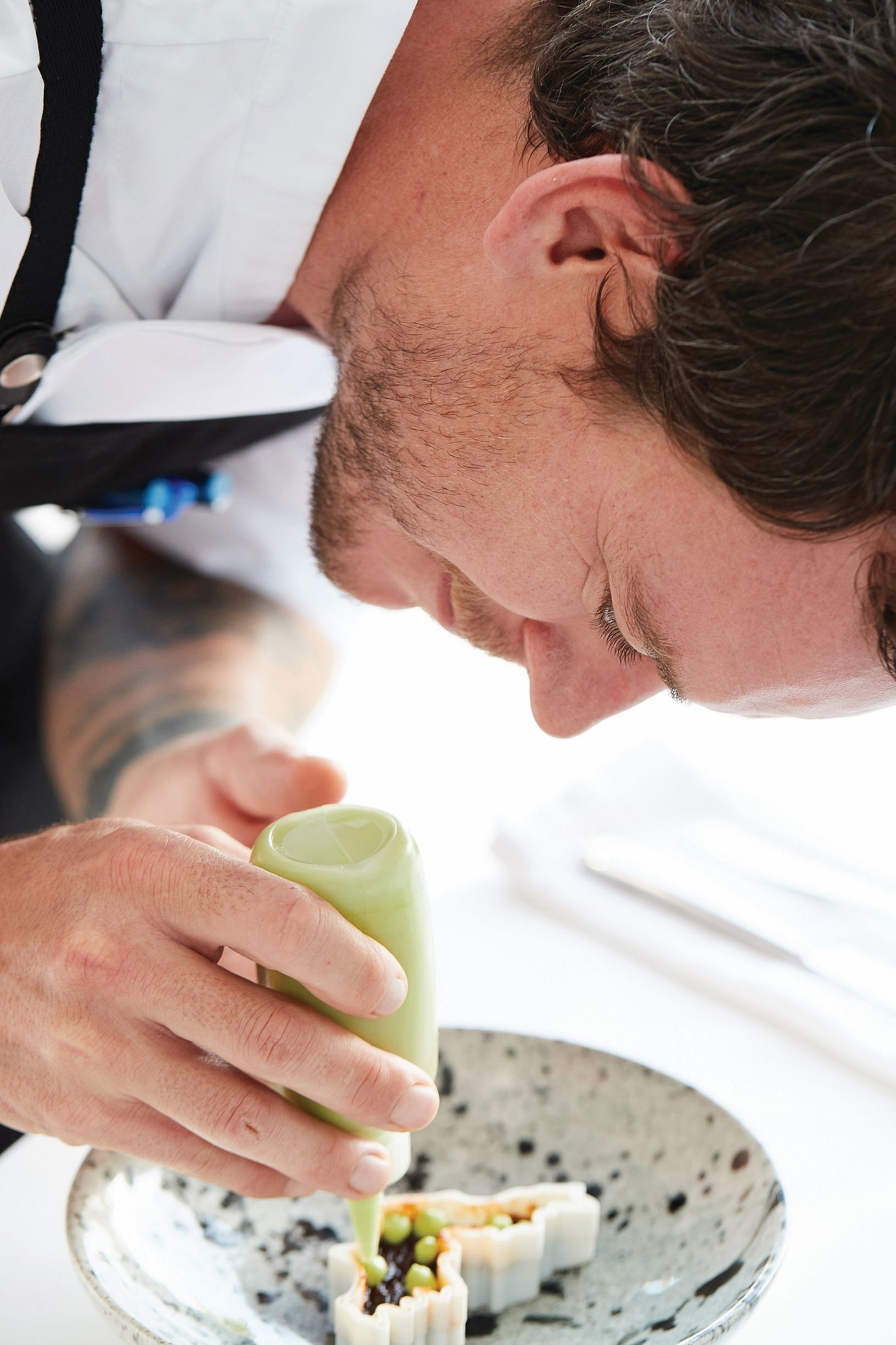
He then finished the consommé with an elderflower vinegar, gifting it a beautiful lift. The last step is a layering of bacon jam, chive emulsion, potato soil and burnt and pickled button onion on top of the Lyonnaise.
Then there’s his terminally tender Snake River Wagyu Picanha, slow-cooked for around six hours over wood and charcoal, slowly smoked to render the fat of the grade A+ beef until the surface borders on crispy. “Wagyu is full of monosaturated fats, so its fat has a lower melting point than regular beef,” explains the South African chef of his patient technique. “By cooking it this slowly, all the fat breaks down and is absorbed by the meat, making it extremely juicy and tender. It gets lots of love.”
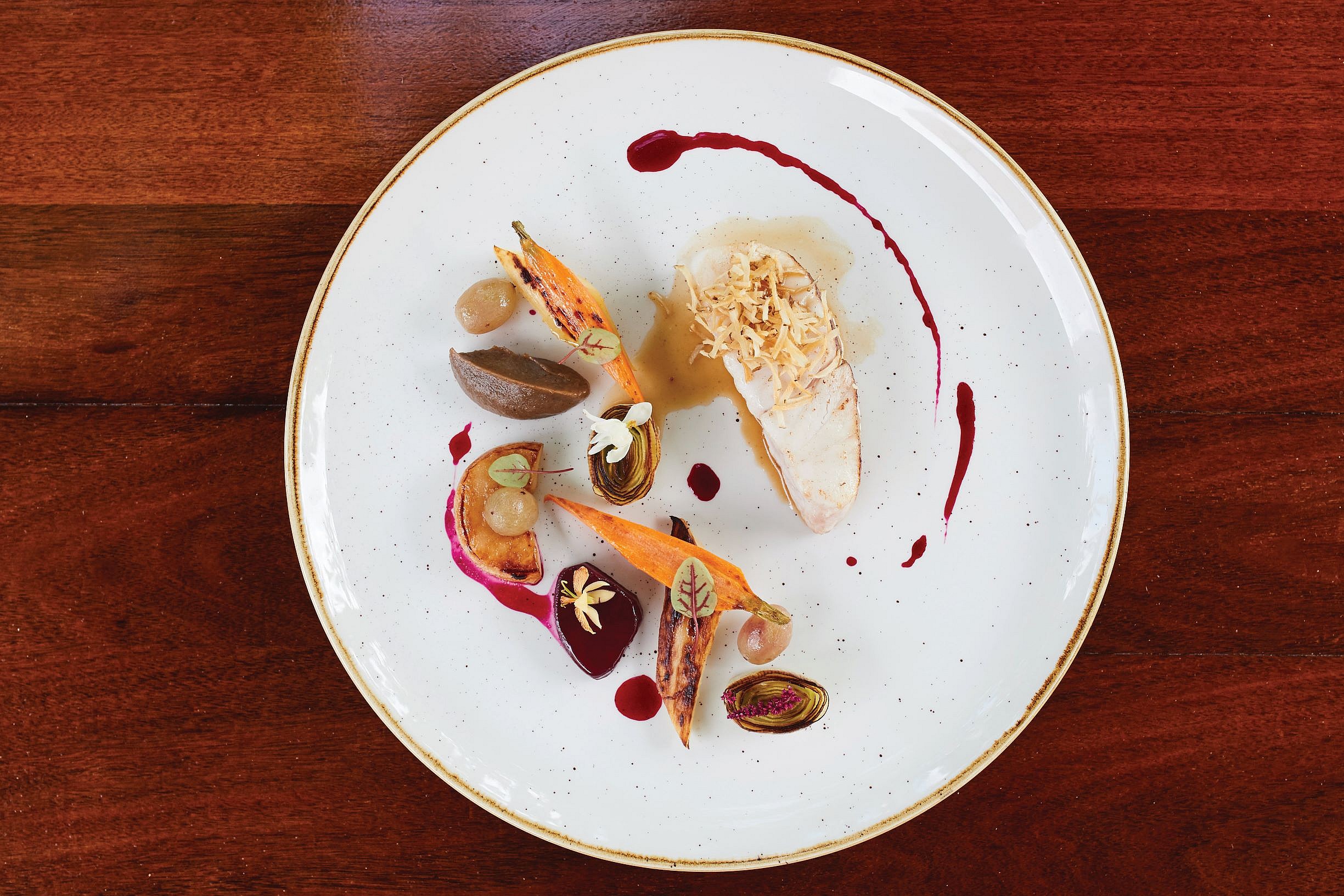
Dishes like these have made Jarad one of the most coveted restaurants on the island, and are why the revered French culinary guide Gault & Millau just awarded McCarroll Chef of the Year on St. Barths. His restaurant also received the highest score in the Caribbean.
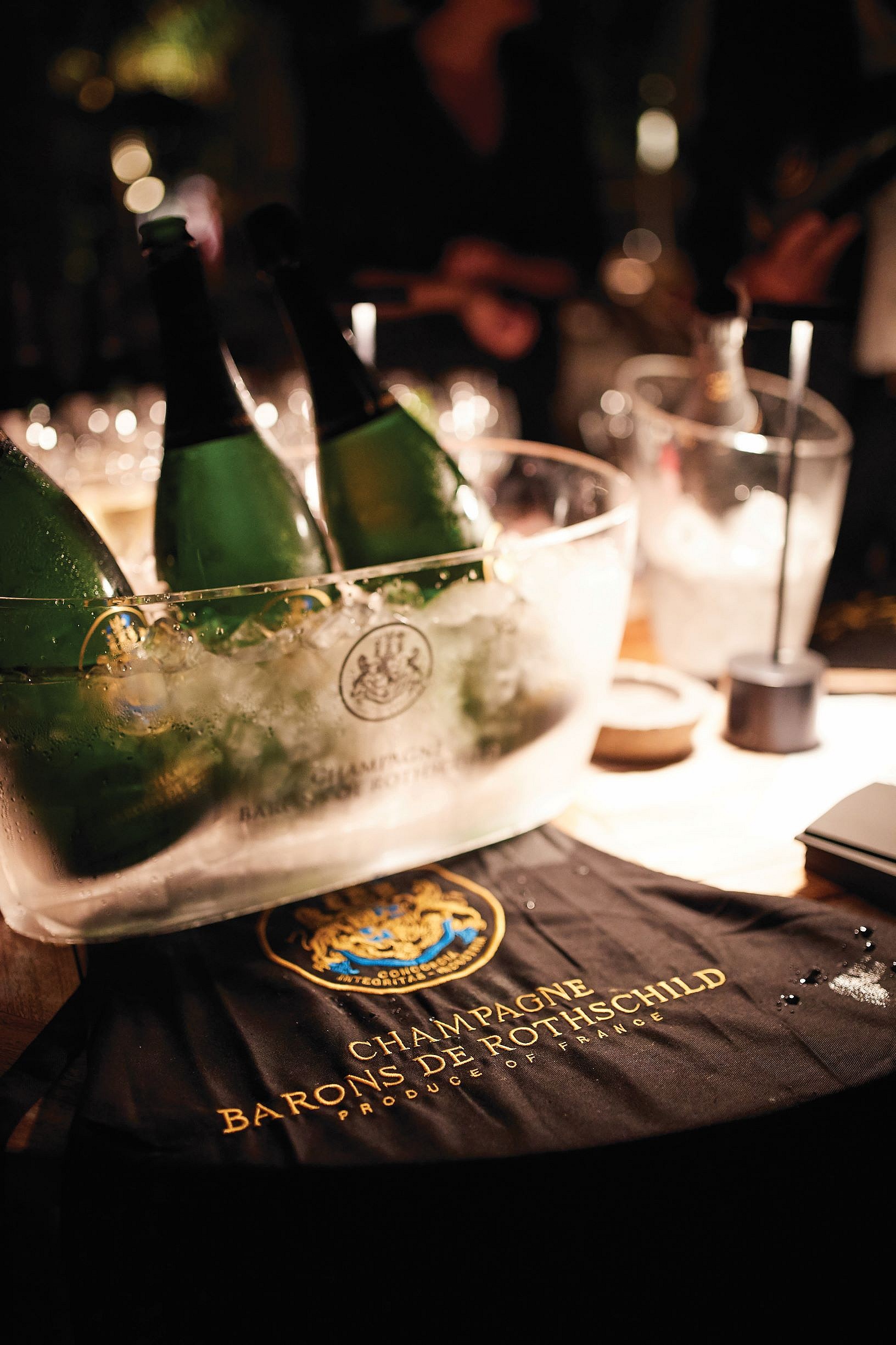
Trying to cook elevated masterpieces on a remote island is not without its handicaps, however. Sure. every week a supply boat from France docks, bursting with meat and French delicacies like foie gras, Saint-Nectaire cheese and cases of rosé and Dom Pérignon. There’s also a weekly plane for more perishable items like fresh produce. Niche ingredients can be very hard to come by, but Caribbean lobster, mango and mahi mahi are among the local treats chefs might encounter.
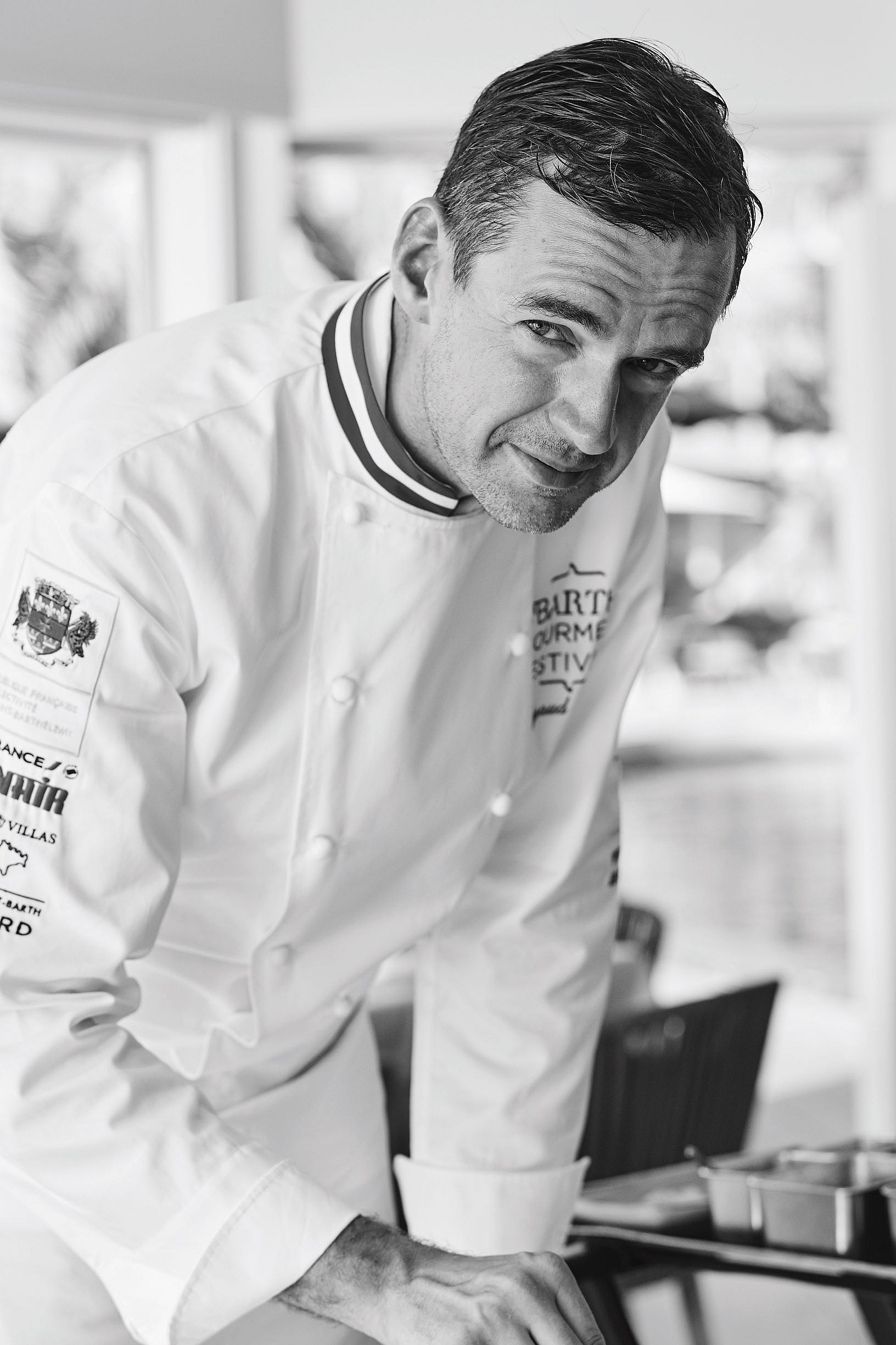
“Working on an eight-square-mile island where things are flown or shipped from Miami and France can be quite challenging,” McCarroll explains. “You have delays, missing items, rough seas so no delivery, etc. You need a thick skin and a quick-thinking mind…. Last season, when something delicious was in season, I would order a lot and preserve, pickle or ferment it. For example, I ordered a lot of elderflower and pickled it all, so I have good ingredients all season.”
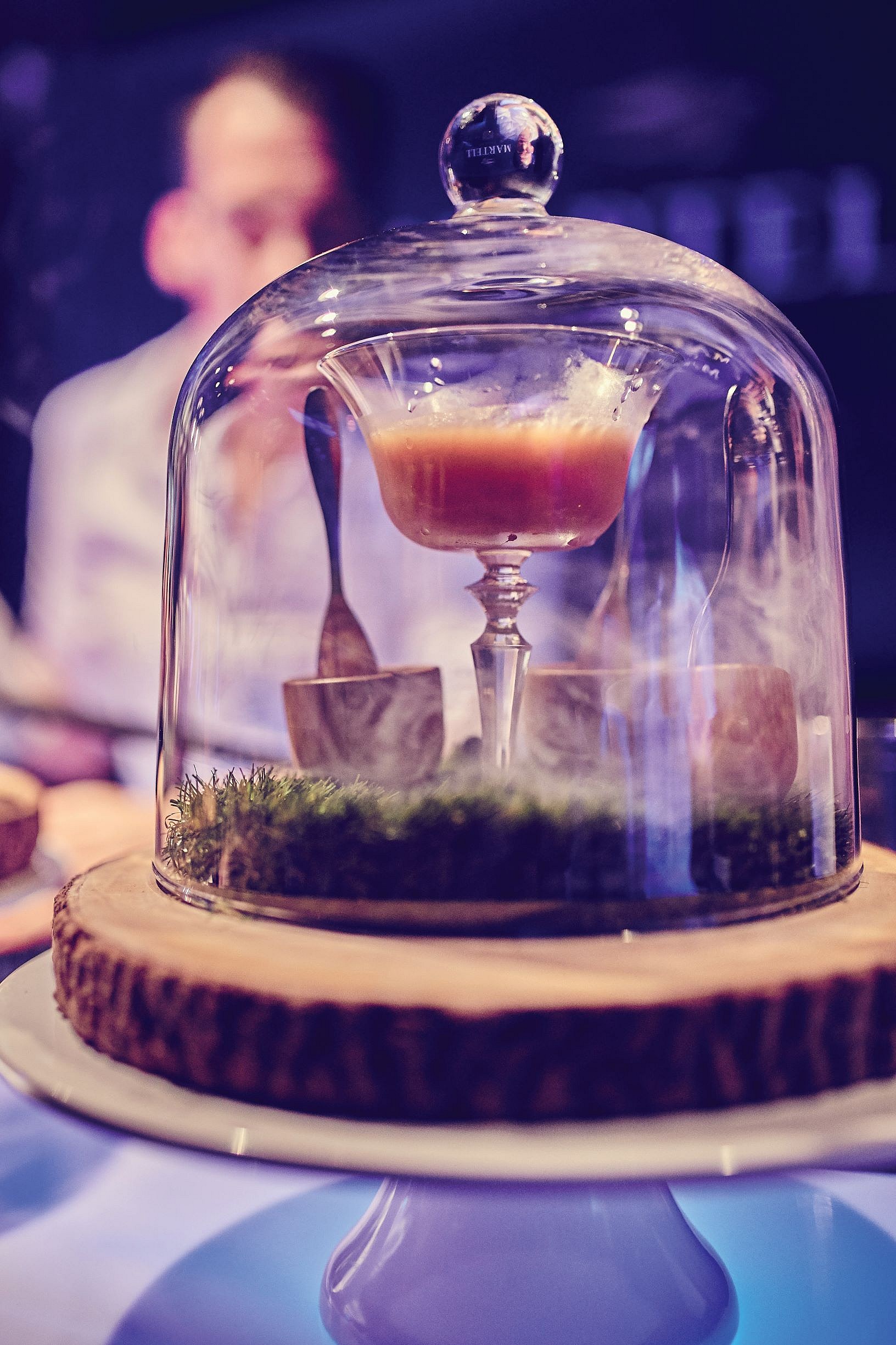
The Gourmet Festival also offers a rare opportunity for these hometown heroes to work with international superstars. One night we dined at the five-star Hotel Christopher’s Christo Lounge Restaurant, another top St. Barths culinary destination, at a dinner helmed by Chef Arnaud Faye of La Chèvre d’Or in the South of France. Not only has Faye earned two Michelin stars, but he’s also a Meilleur Ouvrier de France—a prestigious designation given to only the greatest of Gaul craftsmen, across many trades. It’s not only Faye’s first time at the festival, it’s also his first time on the island.
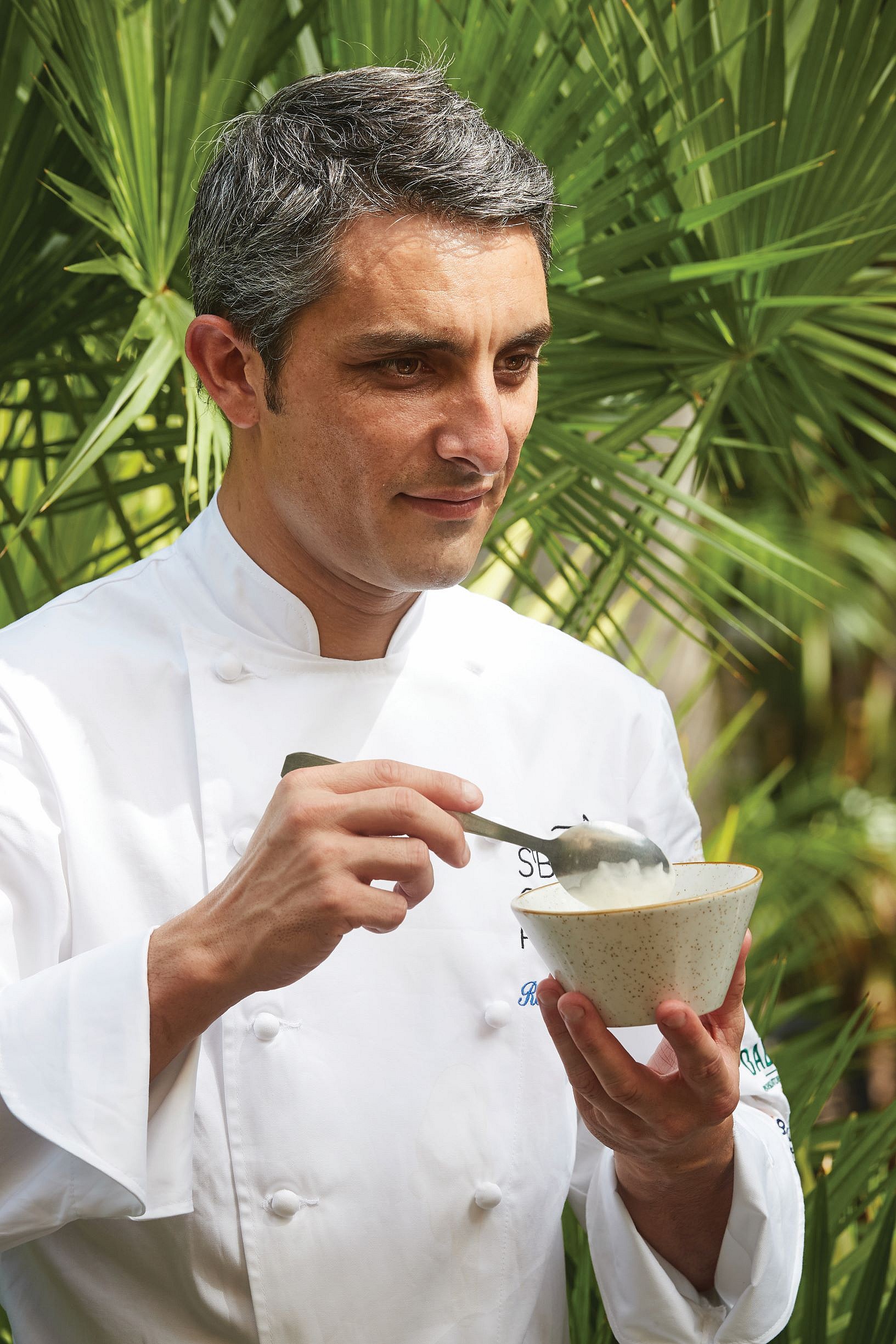
“I’m very surprised because it’s really professional,” Faye notes about his inaugural experience on St. Barths. “Everywhere you go has good service, everybody is really kind, really attentive to the guests. I arrived on Saturday and I had the pleasure of dining at different restaurants, and everywhere the food is very good.”
Visiting St. Barths on any week during high season—roughly November to March—is an experience of superlative indulgence. But having the opportunity to also dine with some of the best culinary maestros on the planet makes the Gourmet Festival an inimitable event. Faye’s starter of Guadeloupe-sourced melon with glistening langoustine netted in Caribbean waters was as fresh as could be. The rice-infused dessert delicately spruced up with mango and coriander was more fine art than sustenance.
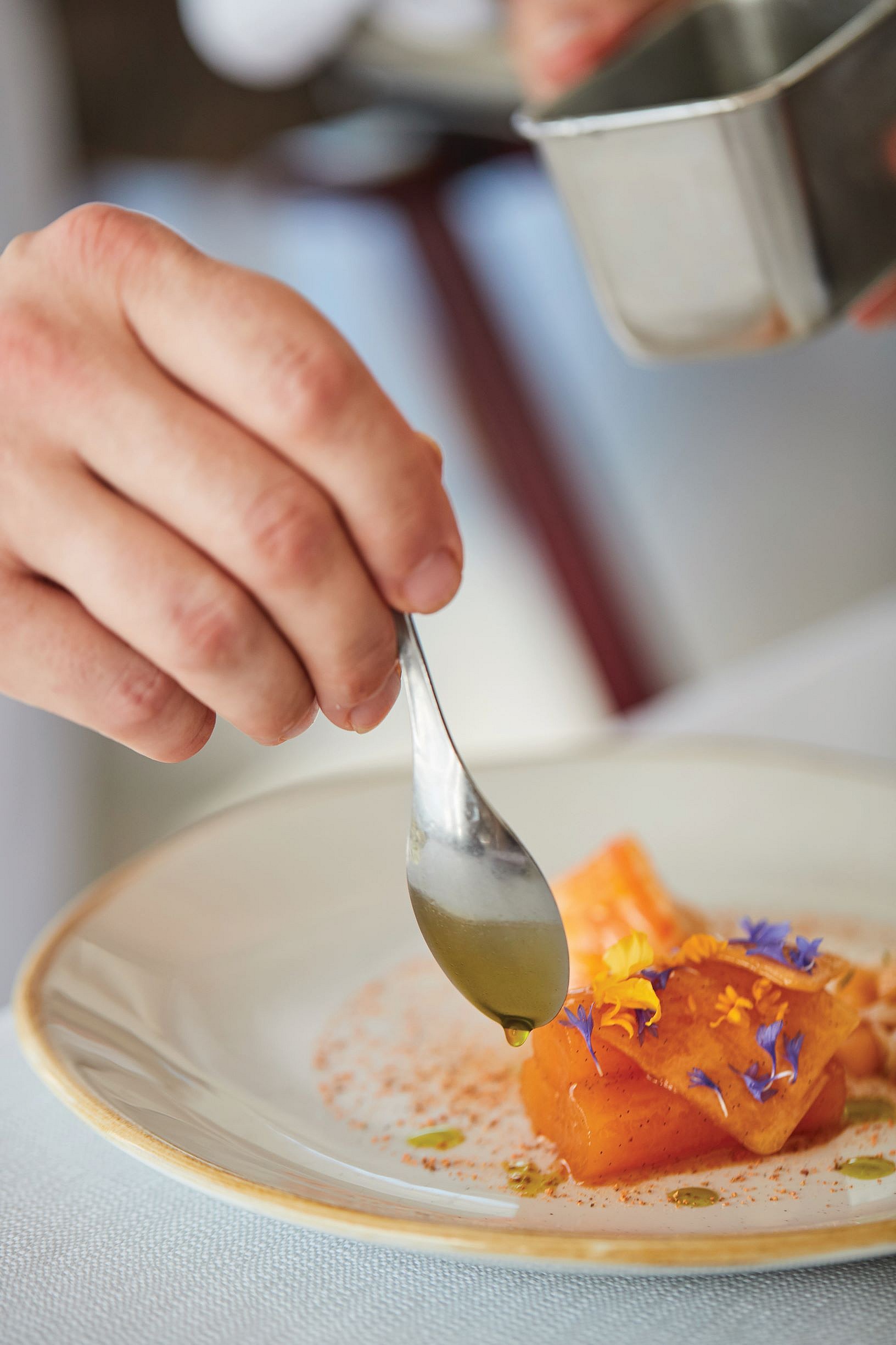
“A lot of people come to St. Barths for the view, but also for the gastronomy. Food quality is important in this era,” Faye explains. When I ask what his favorite local ingredient is to work with, he shakes his head, smiling. “For me it’s not an ingredient that makes St. Barths special, it is the atmosphere.”
